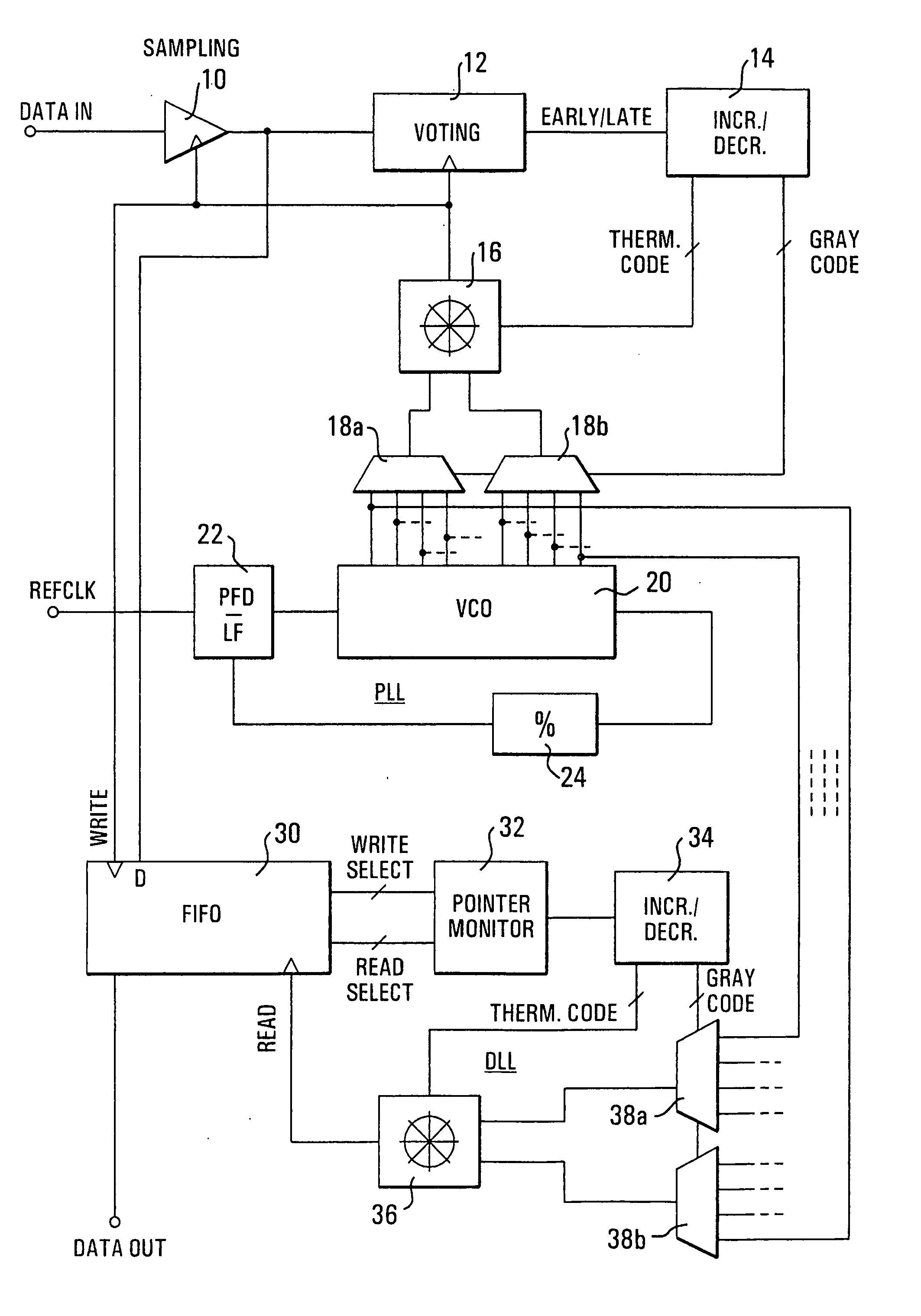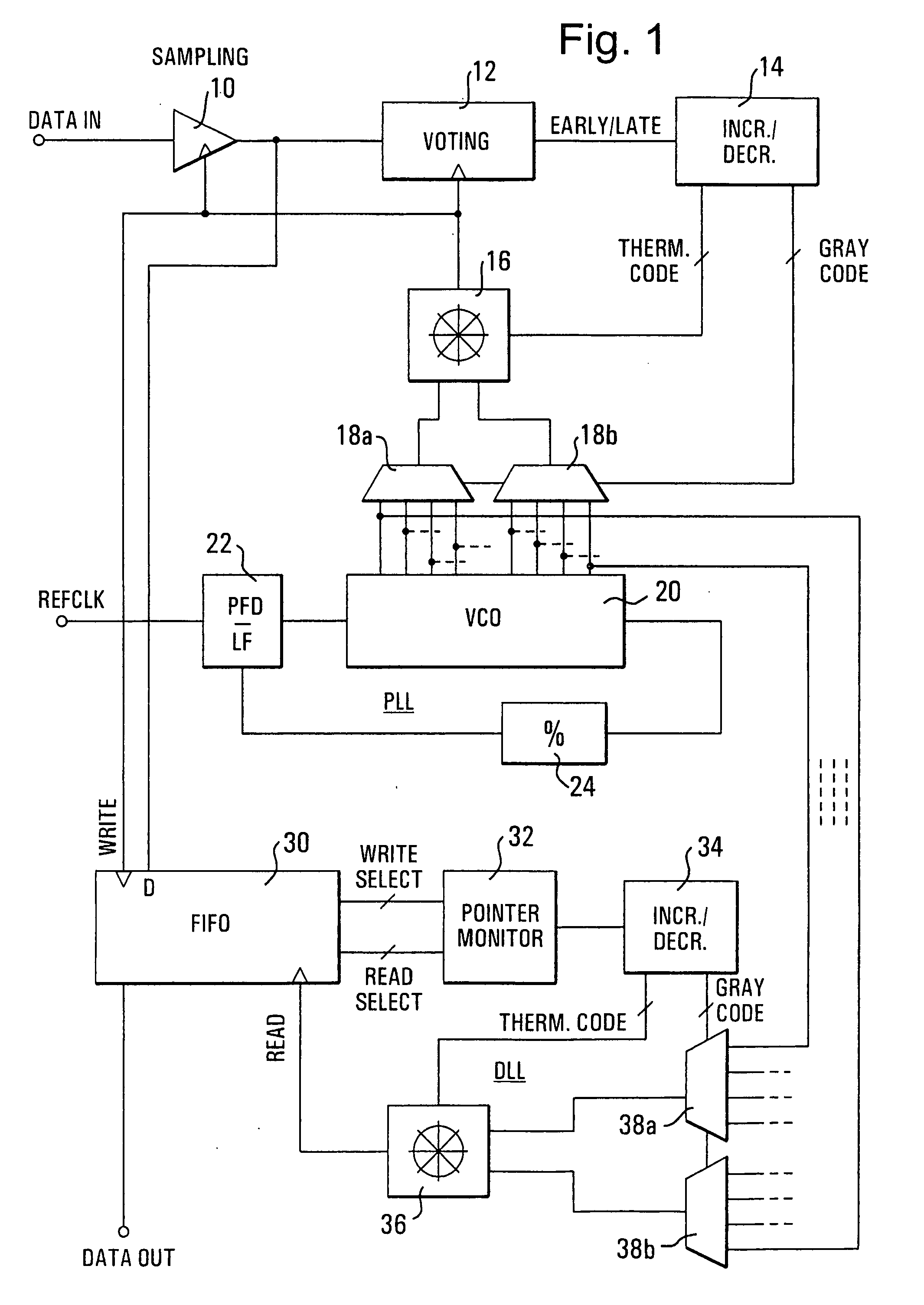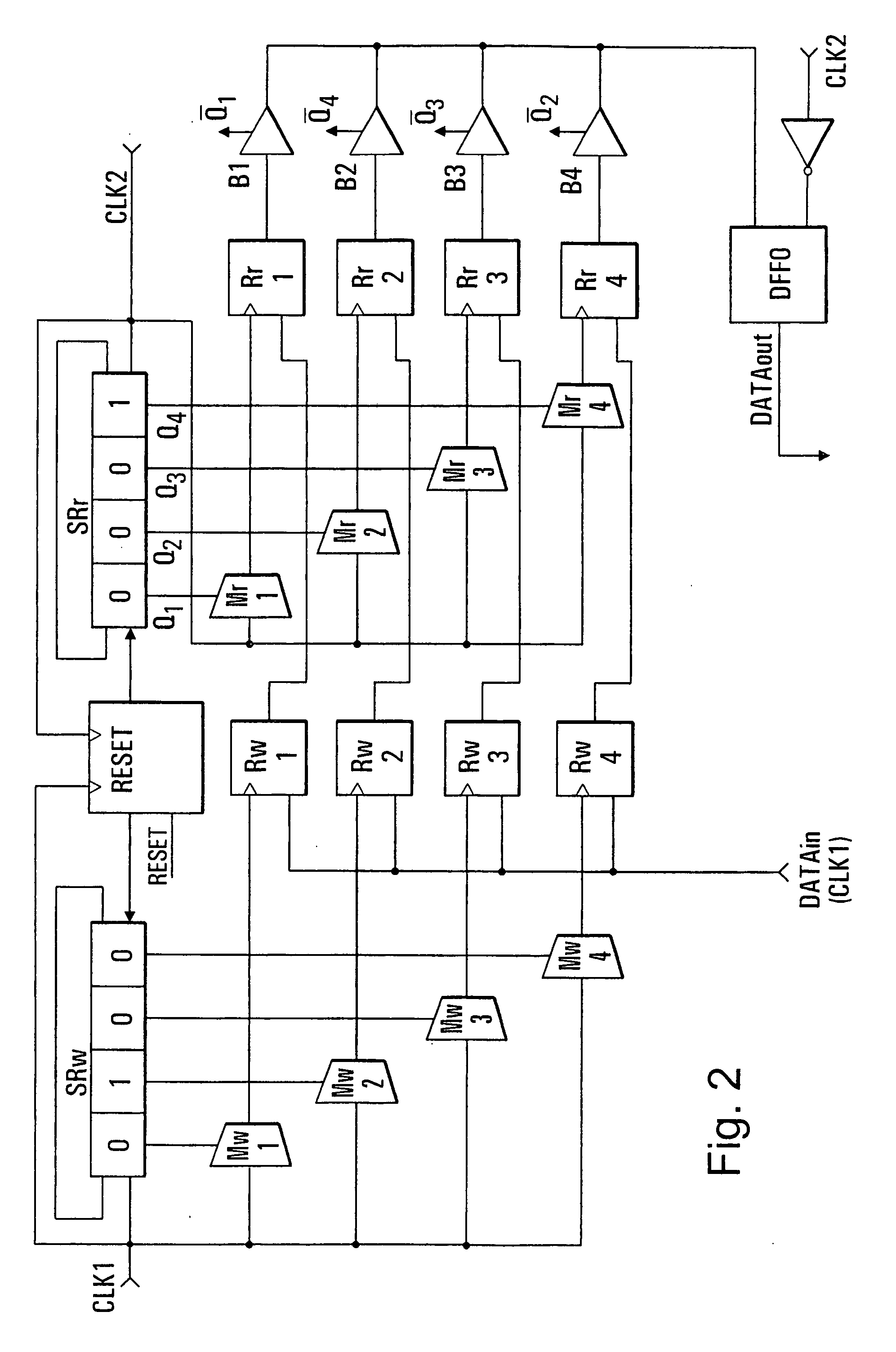Method of recovering digital data from a clocked serial input signal and clocked data recovery circuit
- Summary
- Abstract
- Description
- Claims
- Application Information
AI Technical Summary
Benefits of technology
Problems solved by technology
Method used
Image
Examples
Example
DETAILED DESCRIPTION OF THE DRAWINGS
[0012] The inventive data recovery circuit in FIG. 1 is a CMOS circuit that includes a sampling circuit 10 with a signal input, a signal output and a sampling clock input. A received signal DATA IN is applied to the signal input. The signal output is connected to an input of a voting circuit 12 that has a clock input and a control output. The voting circuit 12 detects early / late conditions and provides a suitable control signal to an increment / decrement circuit 14 that has two outputs. A first one of the outputs provides a thermometer-coded control signal to a phase interpolator 16; a second one of the outputs provides a Gray-coded control signal to a multiplexer pair 18a, 18b. The phase interpolator 16 has an output connected to the clock inputs of the sampling circuit 10 and the voting circuit 12. The multiplexer pair 18a, 18b has two outputs connected to respective signal inputs of the phase interpolator 16. A phase locked loop (PLL) includes ...
PUM
 Login to View More
Login to View More Abstract
Description
Claims
Application Information
 Login to View More
Login to View More - R&D
- Intellectual Property
- Life Sciences
- Materials
- Tech Scout
- Unparalleled Data Quality
- Higher Quality Content
- 60% Fewer Hallucinations
Browse by: Latest US Patents, China's latest patents, Technical Efficacy Thesaurus, Application Domain, Technology Topic, Popular Technical Reports.
© 2025 PatSnap. All rights reserved.Legal|Privacy policy|Modern Slavery Act Transparency Statement|Sitemap|About US| Contact US: help@patsnap.com



